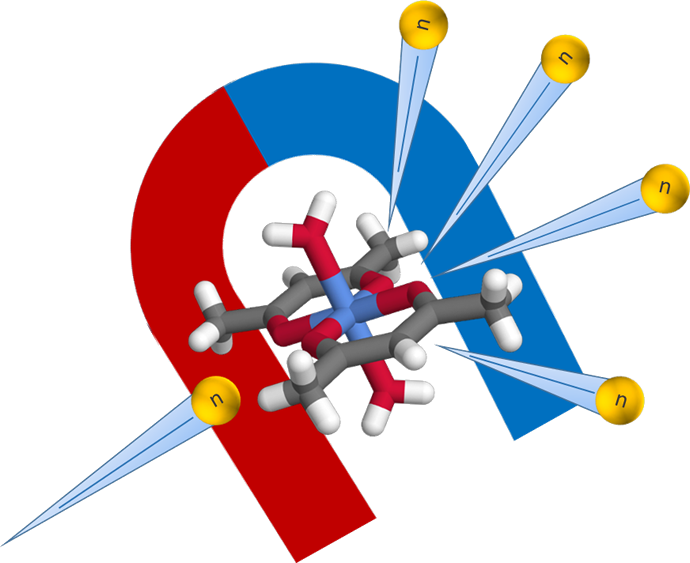June 1, 2019

Single-molecule magnets (SMMs) have been actively studied for their potential applications as a new generation of data storage materials. Chemical qubits are of intense interest for quantum computing. For SMMs, each molecule behaves as a magnet with a barrier for spin reversal. Heights of the barriers and spin-phonon couplings, leading to magnetic relaxation, are critical to the performance of SMMs. Spin-phonon couplings also play an important role in qubits.
Neutron scatterings, along with ab initio phonon calculations, are unique tools in probing magnetic transitions in SMMs, thus their barrier heights, and understanding spin-phonon couplings. Magnetic transitions, revealing the barrier heights, are observable in inelastic neutron scattering (INS). In addition, there are no symmetry-based selection rules for phonons in INS, making all phonons allowed in INS to compare with calculated phonons. Thus INS, coupled with far-IR and Raman, is ideal for probing SMMs. INS is also unique in probing spin dynamics in qubits. Quasielastic neutron scattering (QENS) provides unusual information about molecular dynamics that affects, e.g., spin-spin relaxation time T2.
The research has brought together researchers from different disciplines and institutions to study SMMs and qubits spectroscopically and computationally.
Challenges we are working on
Magnetic transitions and spin-phonon couplings in SMMs are rarely observed directly. Here we are studying the new spectroscopic approaches to determine the transitions, thus the barrier heights, and quantifying the spin-phonon couplings. We are also investigating dynamics of the spin-phonon couplings in SMMs by INS. The study is coupled with other spectroscopies such as pulsed EPR. In addition, we are probing how dynamics of functional groups such as methyl rotation affects SMM and qubit behaviors.
Collaborations
ORNL; University of Tennessee, Knoxville; NIST Center for Neutron Research; National High Magnetic Field Laboratory; Florida A&M University; University of Delaware; Max Planck Institutes; Bulgarian Academy of Sciences; Nanjing University; Changchun Institute of Applied Chemistry